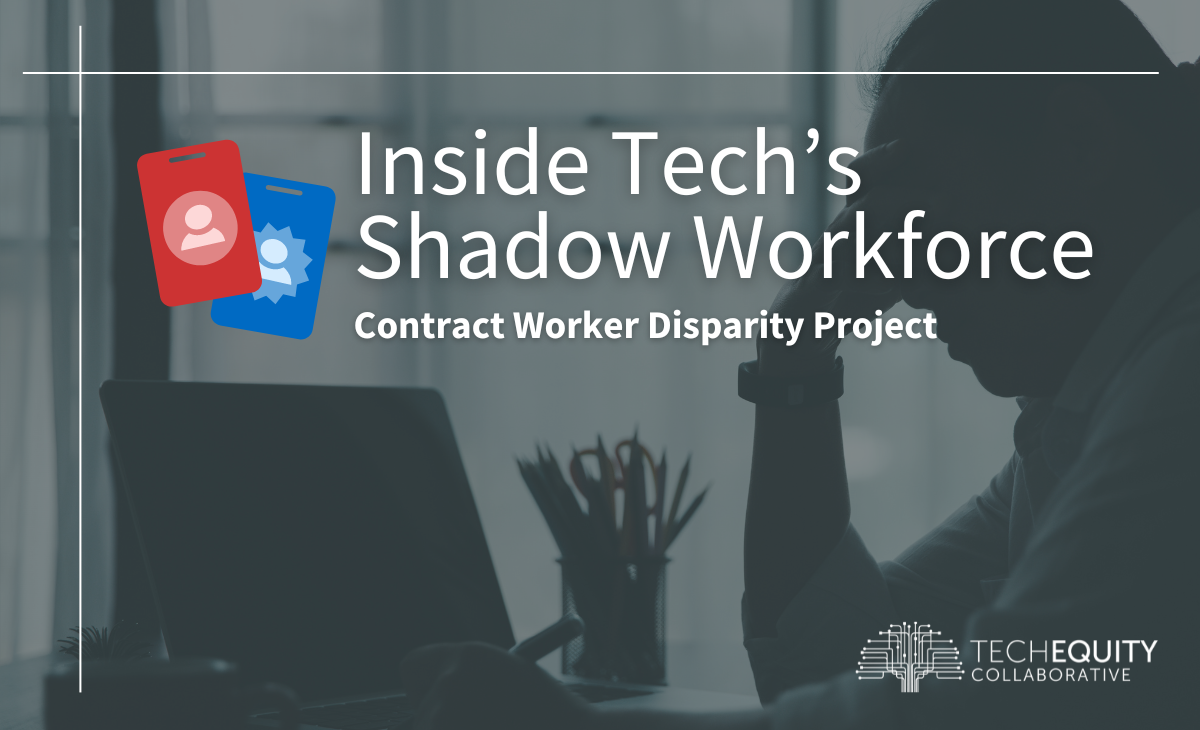“Inside Tech’s Shadow Workforce” – Explained
One in five jobs in America in 2018 was held by a worker under contract, according to an NPR/Maris poll. In the same year, Google hit a milestone in which contract workers outnumbered direct employees for the first time in the company’s 20-year history. Contract work and the staffing industry have only grown since then with little oversight, which is why we started the Contract Worker Disparity Project. During our initial research, we found that there is a heavy reliance on contract workers who are paid less, receive fewer benefits, and are disproportionately women, non-binary, and people of color.
Now, as AI has come to dominate headlines, the roles that contract workers play—and the conditions under which they do it—are even more visible. However, if you want the full story, you need to go to the workers themselves…
The Rise of AI
Contract workers sit in the middle of two forces driving the future of work. They—along with direct hires—are being displaced by AI. Simultaneously, a higher percentage of positions are through third-party contracting agencies so that client employers can then have a flexible workforce that they’re not responsible for or accountable to.
In the short term, the labor force within tech is shifting away from the well-compensated, highly-sought jobs on cushy tech campuses to underpaid and under-protected roles that are often offshored to countries with fewer labor protections.
These same workers are the ones being used to power AI. Generative AI models like ChatGPT and Bard have hidden armies of contract workers training algorithms and moderating content— sometimes for less than $2 per hour.
Our Findings
Workers’ voices have been missing from the conversations on regulations around working conditions, the design of the AI tools themselves, and more. To truly know how we can support this growing workforce, we spoke with over 45 contract workers. These were the main findings:
- Contract work is rising, in the U.S. and internationally. Automation and AI are both powered by contract workers and stand to worsen contract working conditions.
- Workers would not recommend contract work to a friend: 75% of interviewees were quite certain they would not recommend contract work to someone else seeking work unless there was no other option.
- Initial pay might look promising, but the lack of benefits takes its toll.
- There’s a growing sense of uncertainty, a lack of stability, and no clear path to direct employment.
- Workers feel isolated in their work and unable to receive support from their contracting agencies.
- Contract work creates a two-tiered workforce at tech companies.
Overall, much of what we heard echoed what we heard in 2022, and reflected that working conditions are becoming more precarious with the rise of AI.
Where Do We Go From Here?
Throughout the Contract Worker Disparity Project, workers have been consistent about what needs to change: equal pay for equal work, greater stability, and better working conditions.
Here’s how we get there:
- Enact industry-wide regulation: After we released our Responsible Contracting Standard in 2022, only one company voluntarily instituted changes in line with the standard, indicating that there is still work to be done to change the calculus for companies who decide to contract out.
- Expand our understanding of contract work beyond our borders: While our initial research focused on contract workers within the US, the trend towards offshoring these roles requires us to examine how the struggles of contract workers everywhere are interconnected.
- Strengthen worker organizing efforts throughout tech: The very nature of contract work puts workers in siloes, so we need to build a large tent to help workers connect, share their experiences, and organize for better conditions.
Where do you go from here? Click here to check out the full paper. You can also stay up-to-date with more info and action items through our newsletter and social media.
Are you a contract worker? Help develop research and advocate for structural change by sharing your story.





